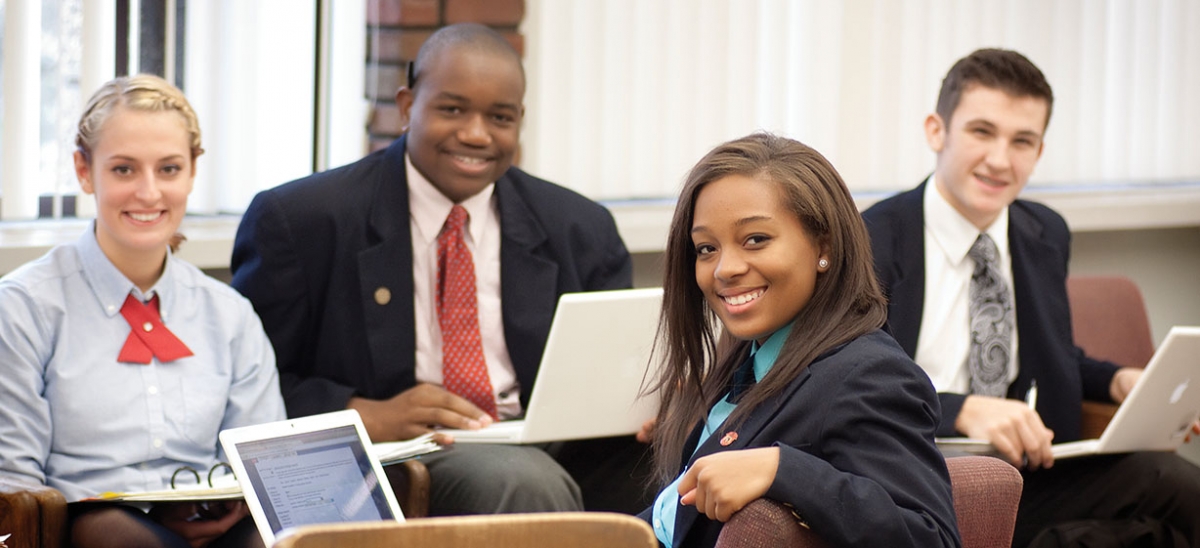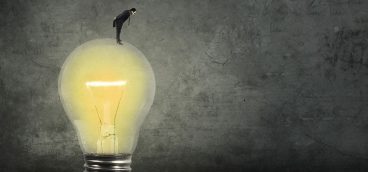
Whether it’s the tepid economy or how to adapt to changing technology, educational institutions across the country face a changing landscape. In this issue, we ask the heads of some of the region’s top independent schools to respond to this question: “What are the most significant challenges facing independent schools and how is your institution meeting them?”
The Kiski School
Christopher Brueningsen, Headmaster
In a dramatically changing scholastic marketplace there’s increased competition for students among Pittsburgh’s public, parochial and independent schools. The explosive growth in online learning programs added yet another schooling option for families. Accordingly, the biggest challenge facing private schools is remaining relevant and valued in this new educational landscape. This requires a thoughtful blend of being faithful to the characteristics historically distinguishing our schools—small classes, individual attention and successful college placement—while staying open to new, innovative methods and systemic adaptation. It’s become clear to educators that if we intend to prepare students to succeed in college and life, we must look carefully and critically at what we are teaching and how we are teaching it. General consensus has been reached on defining the most important proficiencies students need to survive and thrive in an emerging world and workplace—what many have termed 21st century skills—including critical thinking, creativity, problem solving, communication and collaboration.
As an all-boys boarding school, Kiski is uniquely positioned to address the development of these skills helping graduates become leaders in college and beyond. Several years ago, we embarked on a comprehensive audit of our academic program with the goal of integrating 21st century teaching and learning themes into curriculum. We quickly discovered many of the best practices in boy-centered learning—project-based activities, teamwork, competition and open inquiry—were already part of Kiski’s teaching lexicon and well-matched with the competencies we sought to emphasize.
Our teachers embraced a new style where traditional teaching methods and innovative techniques are sensibly balanced. Classroom projects in our 3-D design course allow boys to build working kayaks and freshman science students to model and launch rockets. In our environmental studies course, boys are establishing a one-acre sustainable farm on campus that will supply our dining hall with fresh produce. Senior physics students partnered with a retired PennDOT engineer to design and build a bridge spanning a small creek on campus. Boys love real-world hands-on activities.
Increased competition in the educational marketplace is good for all of our schools. In the past, private schools were dismissive of questions about the “value proposition” of and “investment return” on the education offered, pointing instead to admission selectivity as its leading benchmark of worth. In today’s world, prosperous schools will be the ones welcoming these questions and making a compelling case for enrollment based on qualitative and quantitative measures of success.
The Ellis School
Randie Benedict, Head of School
It’s no longer news that since Madeleine Albright’s appointment in 1996 that the position of secretary of state has often been held by a woman. But did you know that the past three female secretaries of state graduated from girls’ schools or women’s colleges? Despite the fact that many of our nation’s most influential females—Katie Couric, Emily Dickinson, Dianne Feinstein, Nancy Pelosi, Dr. Sally Ride, and Rosa Parks, to name a few—are girls’ school alumnae, some people still believe that girls-only education is anachronistic or even discriminatory. We strongly disagree! One of the major challenges facing Ellis is making a compelling case for girls-only education, particularly when Ellis is the region’s only independent school for girls. Here’s why we believe in girls-only education. Despite advancements by Albright and so many others, women and girls are still subject to gender bias and stereotypes, particularly in math and science. Girls’ schools provide a place where, as early as age 3, girls are free from stereotypical notions about what they can and cannot do. Because there is no peer pressure for girls to conform to societal roles, single-gender schools offer the best possible environment for girls—particularly academically gifted girls—to embrace their intellect, challenge themselves to try new things, and do what they love.
Girls’ schools do not insulate students from “the real world.” While it is impossible to protect children from disappointment or difficulty, it is entirely possible to avoid pointless drama long enough for true self-confidence and character to take root. Your daughter has her whole lifetime to defend her intelligence and persuade small-minded people to take her seriously. Girls’ schools cultivate independent thinking, collaboration and teamwork, all of which are highly valued work and social skills, and reflect a real world that is worthy of our daughters.
Our school is far more diverse than our region: You may be surprised to learn that 35 percent of Ellis students are non-white. This makes us nearly twice as diverse as Allegheny County (18 percent non-white) and slightly more diverse than the city of Pittsburgh (34 percent non-white). A third of our students receive need-based financial assistance.
Clearly there is great demand for schools that celebrate diversity and honor girls and women. The girls and young women of Ellis have tremendous freedom to focus on school, sports, the arts, mitochondria, robotics and whatever else they love. Sharing this experience with the world is a challenge we enthusiastically embrace.
Winchester Thurston School
Gary J. Niels, Head of School
Despite the dramatic changes schools have experienced through time, the greatest challenge remains unresolved in many schools: engaging students and fostering a love of learning and an optimal learning experience for each child. Educational news over past decades has consistently reported underachievement, loss of interest in learning, and waning creativity. Even in the best schools, one finds outdated curricula, ineffective pedagogical practice, and assessments that perpetuate regurgitation rather than intellectual inquiry.
Teaching excellence has long been Winchester Thurston’s highest priority and its most distinctive quality. And through our mission to “actively engage each student in a challenging and inspiring learning process,” we have aspired to universal teaching excellence: Every teacher, every class and every lesson!
In 2008, we launched a three-year study to pursue this aspiration more systematically, and we have extended our mission of “active engagement” to our teachers. The methods we adopted have since been identified as a model by the National Association of Independent Schools. At the heart of this model is creating a culture of pedagogical inquiry, which includes:
- A full-time dean of faculty focused solely on faculty development. The Dean serves as colleague and mentor, not evaluator. Summative evaluation yields limited pedagogical improvement. Instead, we believe that teachers intrinsically aspire to improve and that they can provide the best feedback to foster improvement among one another.
- Open dialogue about teaching practice. In his article, “The Instructional Core,” Harvard’s Richard Elmore promotes “the necessity of teachers [engaging] in a sustained description and analysis of instructional practice.” We use this concept to reimagine professional development. Conferences, workshops and reading have their place in any teacher’s professional growth plan. But collaborative work groups are the true catalysts for self-improvement, particularly when teachers have engaged in autonomous goal-setting, and when they share professional goals with colleagues who help them confront obstacles and brainstorm solutions.
- Time. To make room for engagement and inquiry, we replaced meetings devoted to operational issues with curricular work groups; faculty choose colleagues with whom they collaborate to improve their teaching and curriculum.
Pursuing universal teaching excellence has also strengthened our collegial faculty culture, which in turn strengthens student learning. This year, teachers have worked side by side to develop and prepare for an entirely new academic schedule, enabling them to more readily activate Winchester Thurston’s award-winning City as Our Campus program. By utilizing educational and cultural resources around Pittsburgh, they enhance the active engagement of students and quality of learning.
Through these methods, we are facing the timeless and universal challenge of achieving optimal learning for students.
Sewickley Academy
Kolia O’Connor, Head of School
The central challenge for good schools today is preparing students to succeed in a rapidly changing world. While the future has never been knowable, today the pace of change impacting the workplace and potential career paths is so swift as to render many paths quickly obsolete even as new ones reveal themselves. Considering the jobs that exist today that did not exist 10 years ago—and weren’t even conceived of 20 years ago—we quickly see the magnitude of the challenge.
An excellent education is one of the few gifts a parent can provide a child that lasts a lifetime and that can never be lost or stolen. The capacity to think critically and creatively and to communicate effectively in a range of domains, from mathematics to English to science and history, is vital in responding to changes in the world, even radical or tumultuous changes. The ability to understand different cultures empowers students by providing the skills necessary to ensure positive and informed interactions.
If we want to prepare young people for success, we need to help them develop the core skills of critical and creative thinking and problem-solving across a number of domains. They must be able to communicate in a variety of ways, harnessing both old and new technologies. They also must have direct experience with the arts, where creativity and self-expression provide unique opportunities to explore and make meaning. All these things need to happen in an educational environment that encourages risk-taking and does not punish failure, where difference is celebrated for the richness and strength it brings to our lives, and where old-fashioned ideas of character still matter.
Ultimately, the challenge is to make best use of the latest knowledge about brain and child development, while also reclaiming those tried-and-true practices of the past in order to meet the needs of students today and tomorrow. While schools such as Sewickley Academy seek to hire the best and brightest to work in our classrooms, we know that this is not enough. Once hired, teachers must have opportunities for professional growth and development. Teachers must also have the support and tools they need to be their very best in the classroom. By modeling administratively the sort of educational environment we are trying to create in our classrooms, a school can create a wholly integrated learning organization prepared to adapt creatively to change while keeping the essential core elements that have served students over the centuries. By meeting this challenge, we will better assure the future of our students.
Shady Side Academy
Tom Cangiano, President
As the product of parochial and public schools, I didn’t begin to grasp the qualitative advantages of independent schools until I took my first teaching job at one. My experience at six independent schools over the next 20 years not only shaped me as an educator, but also demonstrated the unparalleled value of an independent school education.
Unfortunately, many parents haven’t had much exposure to independent schools, and in uncertain economic times, the cost can seem daunting. Therein lies perhaps our greatest challenge: How can we convey the true value of an independent school education? At Shady Side Academy, we view the value of the educational experience in two ways: the journey and the destination. The SSA educational journey encourages students to broaden their horizons by taking risks and exploring new interests—in the classroom, on the stage, on the field—and to push themselves to excel in whatever they’re doing. Our rigorous curriculum fosters intellectual curiosity, critical thinking and communication skills. We also place a high value on character education, with the goal of developing not only outstanding scholars, but also ethical leaders and compassionate citizens.
At the heart of any educational journey lie the teachers. Independent schools like Shady Side attract committed, passionate educators and provide an environment that enables teachers to know each student individually. At Shady Side, we often speak about the unique faculty-student relationships that develop here and how they positively impact our students far beyond graduation.
Also, signature programs at independent schools offer distinctive experiences. At SSA, we offer the Singapore Math curriculum at our Junior School, our Middle School Science Olympiad team is the state champion, our Senior School Parkin Fellowship program sends students on international service trips each summer, and the SSA Farm provides the perfect interdisciplinary vehicle for learning the science and economics of growing food.
Finally, independent schools pay a great deal of attention to the destination—both college and beyond. More than 40 percent of Shady Side’s 2011 graduates were admitted to U.S. News & World Report’s top 30 national universities and liberal arts colleges—a much greater percentage than public, parochial and many other independent schools. We count thousands of successful businesspeople, doctors, lawyers, artists, teachers, politicians, authors, actors, scientists and philanthropists among our alumni. These types of results don’t happen by accident. It is the investment in an independent school education that pays a lifetime of dividends.
Aquinas Academy
Leslie Mitros, Head of School
Independent schools can each claim a particular vision that shaped their founding and early growth. Yet it can be a significant challenge for independent schools to remain mission-driven over time. While they share a set of governing principles, each independent school has a unique mission that drives curricular and extracurricular decisions as well as overall climate in a school. Decisions regarding educational trends—not always to be considered advancements—must be considered with that mission in mind. In an independent school, parents expect that the content, delivery and formation of their children will remain consistent with that mission and vision that attracted them to the particular school.
The mission of Aquinas Academy is to assist parents in their fundamental responsibility for the moral and intellectual formation of their children. This is accomplished through a classical curriculum in the liberal arts and natural sciences that is rigorous and college preparatory, in the context of solid Catholic formation. The classical nature of the school is evident in curricular decisions, particularly regarding literature choices and an emphasis on the history of Western Civilization. This nature must then guide decisions regarding educational advancement and trends in technology, STEM and Common Core Curriculum. Parents expect good decision-making that reflects the trust they place in the school to grow the intellect and virtues that will allow for further academic success and moral strength of character in their children.
Technology use requires mission-driven decision-making at Aquinas Academy. In the classical model, classroom conversation and discussion is irreplaceable. Learning occurs in the discourse between students and teacher. In as much as technology can provide opportunity for richer understanding, it enhances that discourse. Technology also clearly advances understanding and possibility in STEM fields and enhances opportunities for students.
Key to the mission of Aquinas Academy is its Catholic identity. Formation, through religious instruction as well as the Sacraments, is evident in the curriculum and structure of the school day. In all things, Aquinas Academy has an obligation to parents to be faithful in authentic Catholic doctrine and teaching.
The particular mission of the independent school must continue to guide its direction. Without that focus, the independent school loses the unique characteristics of its graduates. At Aquinas Academy, that uniqueness is forged through student understanding of the complementary relationship of faith and reason.
The Linsly School
Chad Barnett, Headmaster
As headmaster at an independent school with nearly 200 years of history, I worry that in the scramble to articulate what independent schools can do for children in the fluctuating 21st-century climate, we could talk ourselves out of holding on to the good ideas that got us this far. Before too quickly adopting a simple list of 21st-century skills, we may view this moment as an invitation to reflect upon and enhance the enduring educational practices that have shaped the habits of mind leading thousands of alumni to success over the previous decades.
Tradition’s paradox—when it comes to schooling—is our simultaneous obligation to maintain its reliable anchoring while rejecting its malevolent oppressions. Rooted in a founder’s vision or a faculty’s set of undying beliefs, independent schools are organized around locally vital missions that, in this moment in history, require to varying degrees recontextualization, revision or revolution to remain effective. The fundamental question during this period of transformation is whether independent school teachers can implement leading-edge improvements in ways that suit local needs.
Tradition is a broad—and often deliberately vague—term. I use it to mean those admirable qualities and nonnegotiable, locally rooted beliefs that combine to form a coherent institutional identity. In this current era of radical economic and cultural transformation, words like “tradition” are often spoken with a wink and a nod. But without it, all schools become susceptible to drifting away from their mission.
Innovation matters. But I worry about our getting lost in that pursuit. By continuing to offer distinctive, relationship-based programs, we have an opportunity to preserve our school’s unique ways of developing students while acknowledging shared human values and skills that may transcend the boundaries of our individual schools. Our task is neither to reject 21st-century skills nor turn our backs on tradition. Rather, we may accept innovations into our local traditions and, in so doing, transform them to create something that at once preserves and advances the core values that created our educational effectiveness in the first place.
Institutional continuum matters. To sustain our existing commitment to excellence and evolve in ways that are contextually relevant at The Linsly School, we bind strategy and tactics to our founding motto, “Forward and No Retreat.” Linsly students know that their resilience matters, that we expect their perseverance through hard times. Personal resolve and toughness led to success in Noah Linsly’s frontier; it also leads to success in today’s staggeringly complex economic and cultural frontiers.




